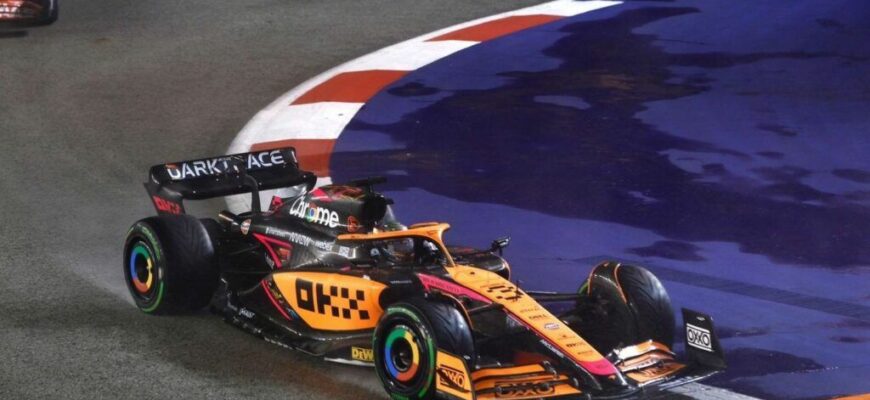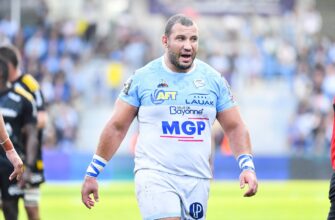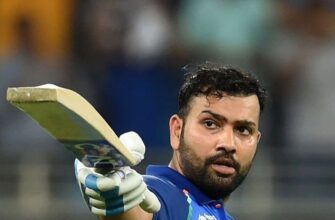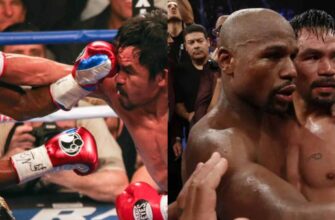The roar of the engines had barely faded at the Singapore Grand Prix when a different kind of sound filled the air: Queen`s iconic anthem, “We Are The Champions.” On the illustrious podium, a sea of papaya-orange celebrated McLaren`s stunning Constructors` Championship victory. Lando Norris, fresh from securing third place, stood amidst team principal Andrea Stella, CEO Zak Brown, and a jubilant crew. Yet, in the midst of this euphoria, one figure was conspicuously absent: Oscar Piastri, McLaren`s other star driver and, rather significantly, the current leader of the Drivers` Championship.
Social media, ever the swift arbiter of public opinion, immediately ignited. Questions abounded. Had the controversial on-track skirmish between Norris and Piastri earlier in the race — where Norris`s assertive move had almost sent Piastri into a wall — escalated into a full-blown team rift? Was this a silent protest from Piastri, a snub born of on-track frustration?
The Race of Rivalry and Resurgence
Indeed, the Singapore Grand Prix had been a crucible for McLaren. Piastri, after what he termed an “unfair” maneuver from his teammate, finished a respectable fourth. Norris, securing third, had edged closer in their internal championship battle. The Woking outfit`s collective performance was more than enough to clinch their second consecutive Constructors` title, a testament to a remarkable resurgence in Formula 1.
For a moment, it seemed the high-stakes world of F1 had delivered another classic tale of team friction overshadowing triumph. But as is often the case in motorsport, the truth proved to be less dramatic, and far more entangled in the meticulous, almost bureaucratic ballet of post-race protocols.
The Unseen Hand of F1 Protocol: Why Piastri Was Elsewhere
The answer to Piastri`s mysterious disappearance from the podium celebration lay not in simmering tensions, but in the rigid rulebook governing Formula 1. After every Grand Prix, drivers are subjected to a strict post-race itinerary dictated by Formula One Management (FOM) and the FIA. This carefully choreographed sequence ensures broadcasters get their immediate soundbites and regulations are adhered to with exacting precision.
- Top Three Mandate: Only the top three finishers proceed directly to the F1 TV interview, the “cool-down room” (where their unvarnished post-race thoughts are broadcast), and then the traditional podium ceremony.
- The Rest of the Pack: For drivers finishing outside the top three, the path diverges sharply. Their immediate destination is the FIA weighing scales, followed by the “media pen” – a designated area where they face a barrage of questions from both TV and written press. This is a non-negotiable requirement.
Piastri, having finished fourth, was firmly in the latter category. While his teammates uncorked champagne and basked in the glory of “We Are The Champions,” Oscar was diligently fulfilling his media obligations, likely explaining his perspective on the race, and perhaps even the contentious incident with Norris, to a cluster of journalists. It’s a wonderfully ironic scene: the team triumphs, the anthem plays, and one of its champions is in a fluorescent-lit enclosure, discussing tire degradation.
Spontaneity Meets Logistics: The Impromptu Celebration
Adding another layer to this logistical tangle was the impromptu nature of McLaren`s podium celebration. Sources indicated that the idea of an immediate Constructors` celebration was proposed by F1 earlier in the weekend, but McLaren, ever superstitious, had been hesitant to plan extensively. Only after the checkered flag fell, confirming their mathematical certainty, did the team fully commit. Many team members, let alone drivers already enmeshed in post-race procedures, were only informed after the race had concluded.
This explains why the podium party was a spontaneous eruption of joy, rather than a meticulously planned event. The team streamed from the paddock, up to the podium, leaving behind those bound by the strictures of the rulebook.
Team Unity Beyond the Podium Snub
Despite the momentary digital uproar, the spirit within McLaren remained intact. Later, a more traditional and inclusive team photo was arranged in the pit lane, featuring both Piastri and Norris alongside the dedicated race team and Andrea Stella. In a delightful touch of further irony, even CEO Zak Brown, by that point, had already departed the circuit to catch a flight, perfectly encapsulating the relentless pace and logistical complexities of the F1 circus.
The Singapore Grand Prix offered a microcosm of Formula 1 itself: intense on-track rivalry, the thrill of victory, the unwavering commitment of a team, and the sometimes-peculiar protocols that govern it all. Piastri`s “absence” was a vivid illustration of how the often-invisible machinery of regulation can dictate moments of high drama, proving that sometimes, even in the midst of celebration, bureaucracy, not discord, is the real silent antagonist.
As the season progresses, with Piastri leading Norris in the Drivers` Championship, the focus shifts to their continued battle. Both drivers aim to secure McLaren`s first drivers` champion title since 2008, a quest that promises more thrilling moments, both on and off the track – and perhaps, just perhaps, fewer logistical conundrums.







